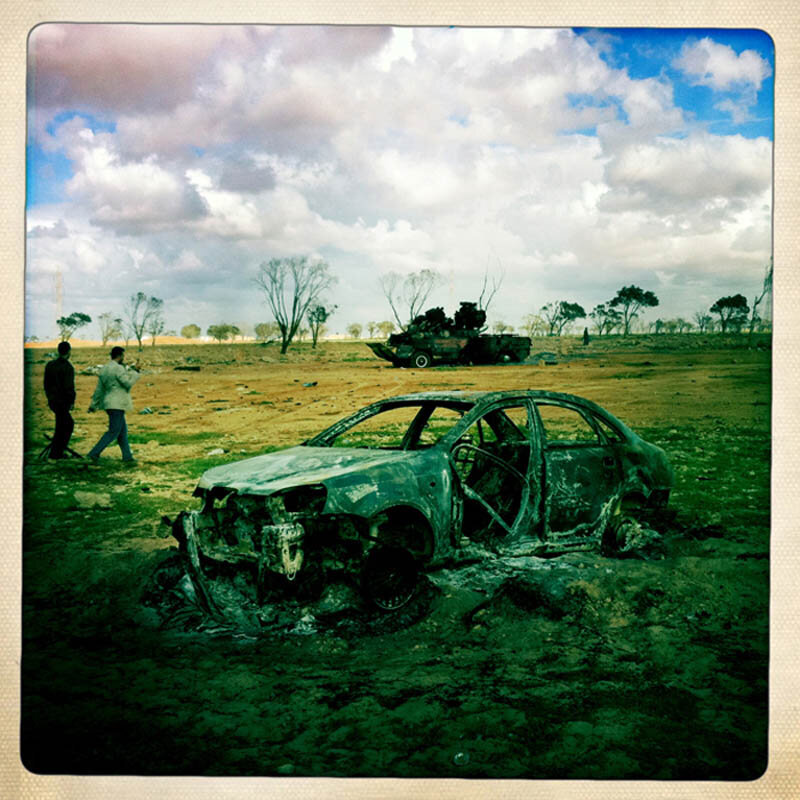Following the model of the Arab street revolutionaries in neighboring Egypt and Tunisia, and fueled by social networking sites like Twitter and Facebook, Libyan civilians orchestrated a massive uprising against the 42-year-old reign of strongman Muammar Gaddafi. When a full-scale war between Rebels and Loyalists erupted - trading gun and mortar fire across an ever-fluctuating frontline - curious civilians began to document their rebel movement with their mobile phones, instantly updating the world on events as they transpired.
While I worked to cover this story in a more traditional sense, I was also drawn to using my iPhone as I have in Afghanistan. Small mobile phone cameras are innocuous and enable a far greater intimacy with a subject. It was a liberating experience; to point and shoot with a small device, unhampered by camera bags full of gear and reacting to the world around me.
As photojournalists, our responsibilities include not just communicating content, but also creating an aesthetic, a visual narrative that will capture our audience’s attention. The public today is more visually sophisticated than ever before. The overwhelming dearth of information available on the internet tends to weaken the impact of content. Important stories get lost in the fray. So as photographers - as creatives and not just journalists - we have the added task of developing a connection to our audience. We need an image that will engage the viewer, which makes our audience question what they are seeing, which allows them to take a step closer to the image and thus the content.
At the same time, using my iPhone allowed me to transmit images from the field updating my blog like many of the Libyan revolutionaries around me. Embracing this new paradigm of journalism - no middle man, no publisher - I posted images from Libya and gained over 500 followers in a week, regular curious people - Libyans, Americans, Europeans - who bypassed traditional news sources.
It is perhaps fitting that the Arab Spring movement across the Middle East has been enabled by social media and embraced mobile devices as content gatherers. Is this the future of journalism?

























































